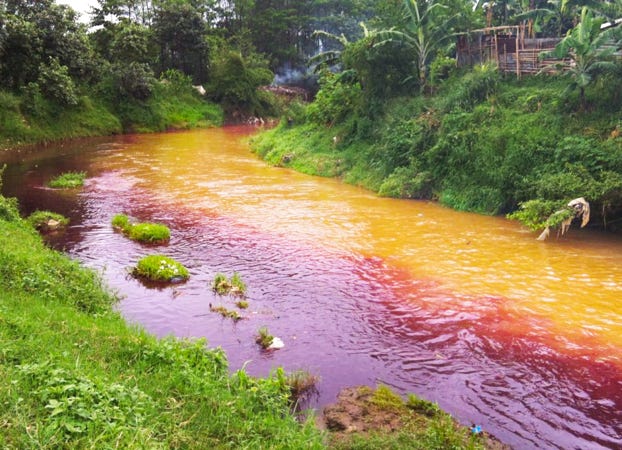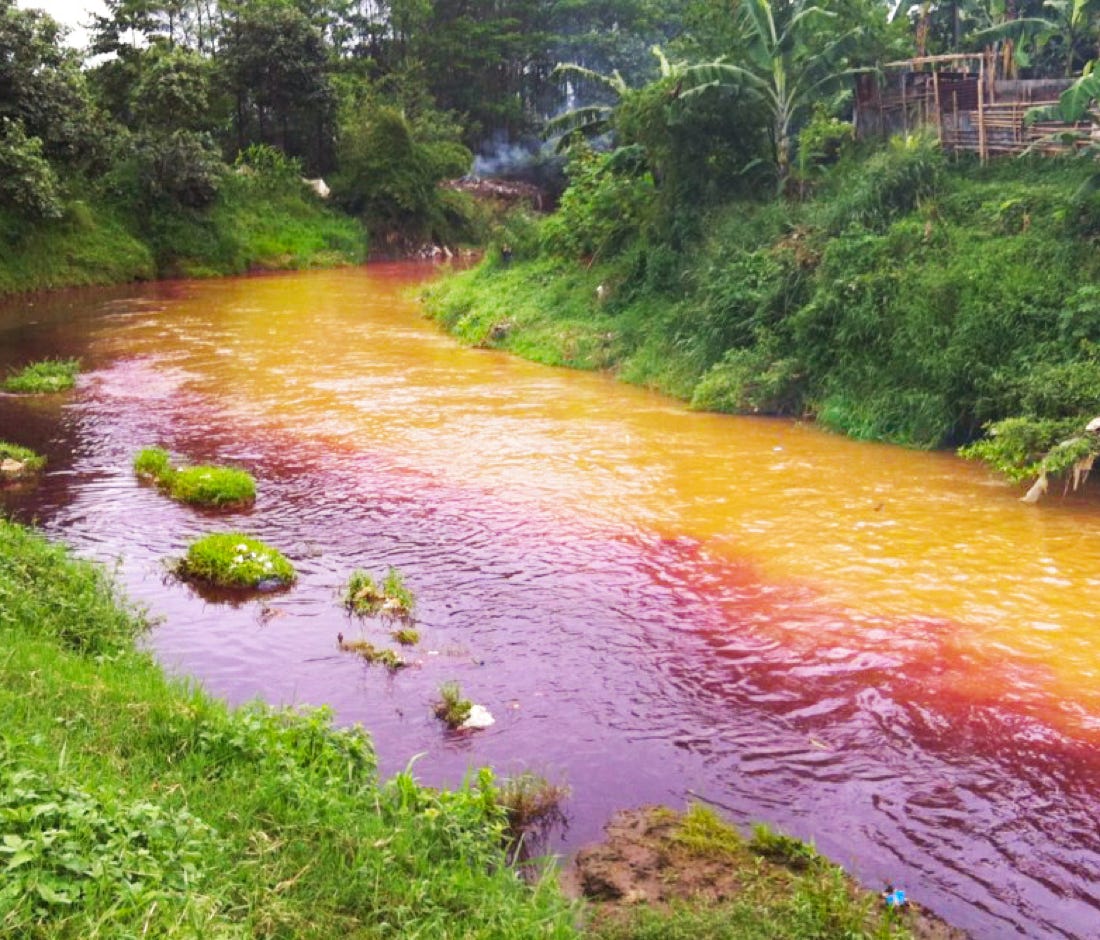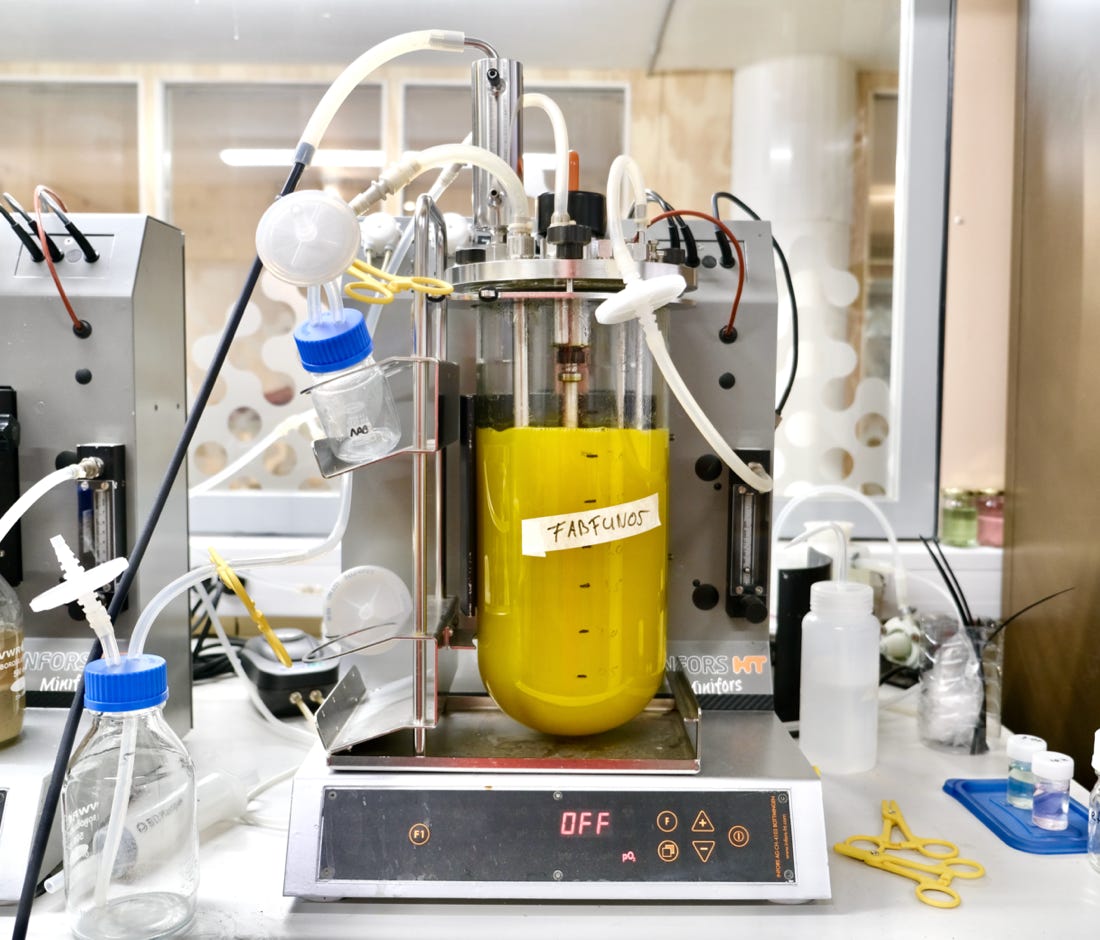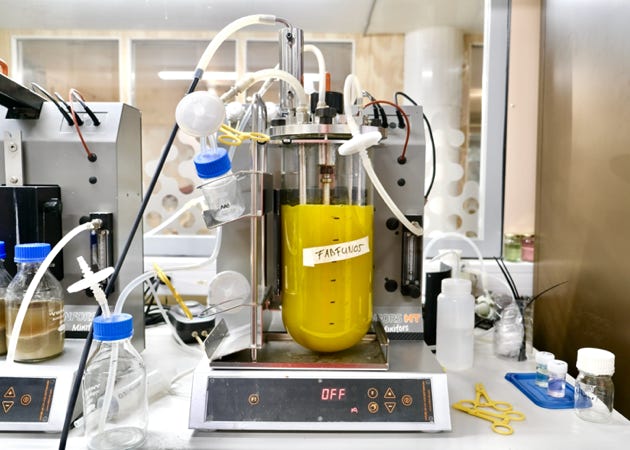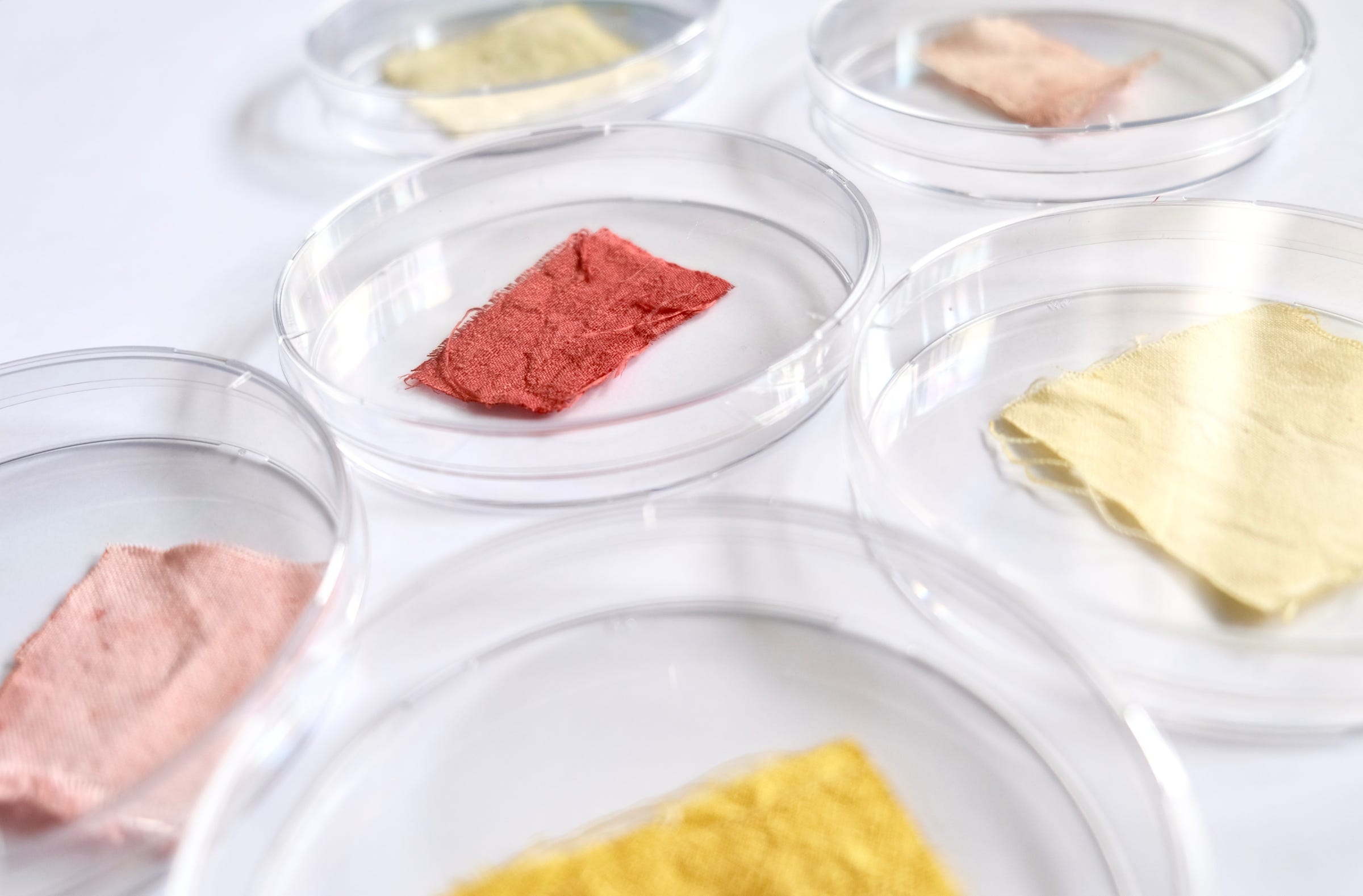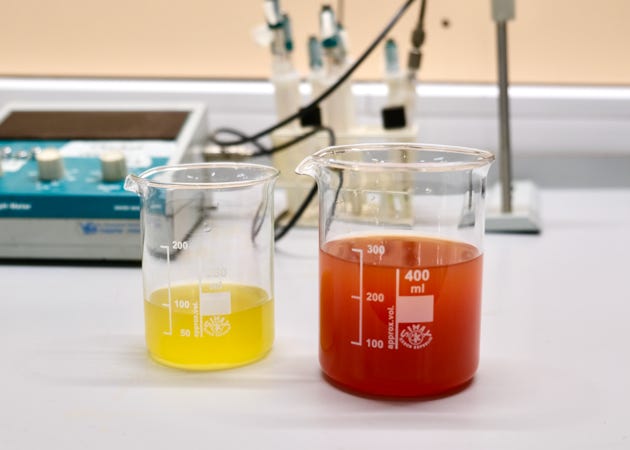Fabulous Fungi formulates a solution to these problems by using fungi for a sustainable textile dye. Fungi use biochemical processes to produce pigments, making the impact different from fossil-based heat and extraction processes. At Fabulous Fungi we grow different fungal species in order to create multiple colours. When the fungi are fully grown, the pigments are extracted and used to dye fabrics. No harmful chemicals are used in this process. Currently, we’re still working on lab scale. Our goal is to scale up our production in the coming two years in order to open our pilot factory in the near future.
Nowadays, 90% of our clothes are dyed synthetically. There are many problems with this textile dyeing method, and almost all of them are related to excess water consumption and pollution. The dyeing and finishing phase of textile fibres can require as much as 200 tonnes of water for every tonne of textile produced. Moreover, the textile dye is responsible for a significant amount of water pollution, which has serious consequences. For example, the pollution of the Citarum, the most polluted river globally, has been linked with increased cancer rates, as well as skin diseases, mental illness and slow development among local children.
On a lab scale, our way of dyeing appears to result in a large reduction of CO2 emissions and water use. The fungal pigments that form the basis of the textile dye are biodegradable. This means: If remnants of the dye bath end up in the sewer and/or rivers, there will be no pollution of the water. In addition, the use of these fungi are 100% safe for both the person working with the dye and the person ultimately wearing the dyed garment. Thus, no health problems are involved. Hence, Fabulous Fungi dye has many benefits over synthetic textile dye and other alternatives.
Lab setup for fungal growth, Ilse Kremer
Fabulous Fungi formulates a solution to these problems by using fungi for a sustainable textile dye. Fungi use biochemical processes to produce pigments, making the impact different from fossil-based heat and extraction processes. At Fabulous Fungi we grow different fungal species in order to create multiple colours. When the fungi are fully grown, the pigments are extracted and used to dye fabrics. No harmful chemicals are used in this process. Currently, we’re still working on lab scale. Our goal is to scale up our production in the coming two years in order to open our pilot factory in the near future.
